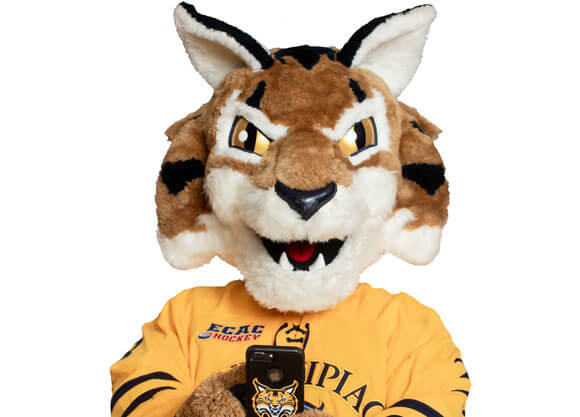
Professor reflects on 30 years of text messaging
December 02, 2022

December 02, 2022

“Why talk when you can text? There is minimal lag in transmission time and plenty of privacy,” said Associate Professor of Journalism Richard Hanley. “But as with all technologies, a trade-off exists. Text messages must be short, as the SMS acronym to describe it — short message service — suggests.”
Texting has influenced the way people utilize language, he said.
Hanley compares emojis and symbols used in texting to ancient forms of communication, such as sequences of symbols being carved into turtle shells to tell stories.
The combination of traditional and modern forms of communication via texting revitalizes language by privileging an economy of words and declaring formal structures to be dated and distant from the emerging generational reality, Hanley said.
The first text was sent by Neil Papworth, a former developer at Sema Group Telecoms, after SMS was developed in 1984 by Friedhelm Hillebrand and Bernard Ghillebaert.
The message, which stated “Merry Christmas,” was sent to Richard Jarvis at Vodafone through Papworth’s PC.
Ever since that first message was sent, text messaging dominated digital communications, said Hanley.
“No one can tell what you are texting or to whom you are directing texts,” he said. “It's a great way to react to events with witty replies and so forth that could get garbled or misinterpreted over traditional voice communications. The cellphone promised ubiquity at the expense of audio quality and texting served as the bridge to make sure messages are clear, at least to recipients who can interpret the evolving symbols of language texting encouraged.”
Even though direct messaging on social media has also been on the rise, Hanley believes texting will remain the most popular form of digital communication.
"There are billions of cellphones and most of these are used for texting,” he said. “Texting is near-universal; social media DMs are generally not. And who knows what will happen with Twitter.”
Although texting has its benefits, it does have drawbacks.
These drawbacks are primarily related to safety concerns, experts agree.
According to the NHTSA, 3,124 people were killed in 2020 due to distracted driving, which includes any activity that takes away a driver’s attention such as talking on the phone, drinking, eating, fiddling with the stereo and more.
“Texting while driving is one of the most dangerous activities on the planet,” said Hanley. “It puts other drivers, cyclists, pedestrians and anyone else near a road at risk. Put the phone away before starting the car and don't pick it up until the car is safely parked and the engine disengaged.”
Despite some of texting’s dangers, Hanley believes texting is overall a positive influence.
“Texting is an efficient, quiet form of communication that makes the economy of language a feature for all people of different abilities,” said Hanley. “As such, texting is an overwhelmingly good thing. Of course, voice communicative cues reveal emotion and personality that add layers of meaning to a message, but the creative use of language and symbols can reflect these layers to some degree.”
Quinnipiac Today is your source for what's happening throughout #BobcatNation. Sign up for our weekly email newsletter to be among the first to know about news, events and members of our Bobcat family who are making a positive difference in our world.
Sign Up Now